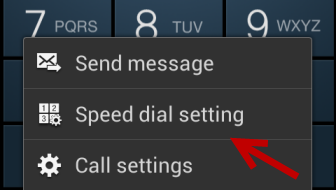

- #Chart of all codes for speeddial lock manual
- #Chart of all codes for speeddial lock code
- #Chart of all codes for speeddial lock professional
When the F4 was announced, people waited for months to pay over $2,000 for them ($3,600 today after inflation). The F4 was the world's top news and sports camera from 1988 through the introduction of the evolutionary F5 in 1996.
#Chart of all codes for speeddial lock manual
You have to program menus to get matrix metering with manual lenses on the F6 all you have to do on the F4 is mount a lens. The F6 is a lighter-duty F5, but at least one can get Matrix metering with manual focus lenses on the F6, which the F5 can't. The F5's meter is worse than the F4's when used with manual focus lenses. The F4 has dedicated knobs for everything. The F5 was simply the F4 in a tougher package, but with knobs replaced by buttons and menus.
#Chart of all codes for speeddial lock professional
The F4 is the world's first professional camera with modern Matrix (intelligent) light metering. (Previous cameras had to use klunky external screw-on motors.) The F4 is the world's first professional camera with a built-in motor drive. The F4 is the world's first professional autofocus camera. The Nikon F4, introduced in 1988 and still used daily by many photographers today, was a breakthrough in that: The Nikon F3 was an electronic F2, still merely evolution, not revolution. The F was mostly what other companies, like Exacta, had done decades before. Nikon's first SLR, the F, was just an SP rangefinder with an added prism. Nikon's first rangefinders were merely massaged copies of the Contax and Leica. Nikon's digital SLRs and F5 and F6 are nice, but still none of them, not even the D3, is as earth-shattering as was the F4 at its introduction. The F4 shattered more new barriers and advanced more technology in bigger steps than Nikon had ever done before, or has ever done since. The Nikon F4 is what brought cameras into this modern era. The indomitable Nikon F4 is the most innovative camera ever introduced by Nikon, or probably anyone. This was made possible by the low cost, low power requirements, small size and high reliability of MOS transistors, over 15,000 of which were contained on ten IC chips, including one chip for logic, one for the dial interface, and eight for memory.I buy only from these approved sources. Between 19, the American company Bell Laboratories develop a push-button MOS telephone called the "Touch-O-Matic" phone, which could store up to 32 phone numbers. This was demonstrated by the British companies Pye TMC, Marconi-Elliott and GEC in 1970. MOS memory chips were used to store phone numbers, which could then be used for speed dialing at the push of a button. Metal-oxide-semiconductor (MOS) integrated circuit (IC) telephone technology enabled speed dialing on push-button telephones in the early 1970s. Other early "instant dialers" dating back to 1972 also included punched card machines and magnetic tape machines. The capability for speed dial historically dates at least as far back as the Number One Electronic Switching System (1ESS) in 1965.

Most mobile phones have a contact list feature which provides similar abilities although most have an instant call button which only requires one click.

The numbers are programmed by the subscriber through the standard telephone dial, and speed dial calls are placed by dialing simply the digit and waiting a few seconds on a standard rotary dial phone and an older 10 key Touch Tone phone, or by dialing the number and the # key to instantly connect the call on a modern 12 key Touch Tone phone. Speed dialing is also available via Custom Calling features from the Telephone Company's Central Office.
#Chart of all codes for speeddial lock code
The speed dial numbers are usually accessed by pressing a pre-determined key or keys on the phone, followed by a one or two-digit code which the user assigns to each number however for ease of use, on many systems a call may be placed by pressing and holding one key on the numeric keypad. In most cases, the user stores these numbers in the phone's memory for future use. This function is particularly useful for phone users who dial certain numbers on a regular basis. Speed dial is a function available on many telephone systems allowing the user to place a call by pressing a reduced number of keys.


 0 kommentar(er)
0 kommentar(er)
